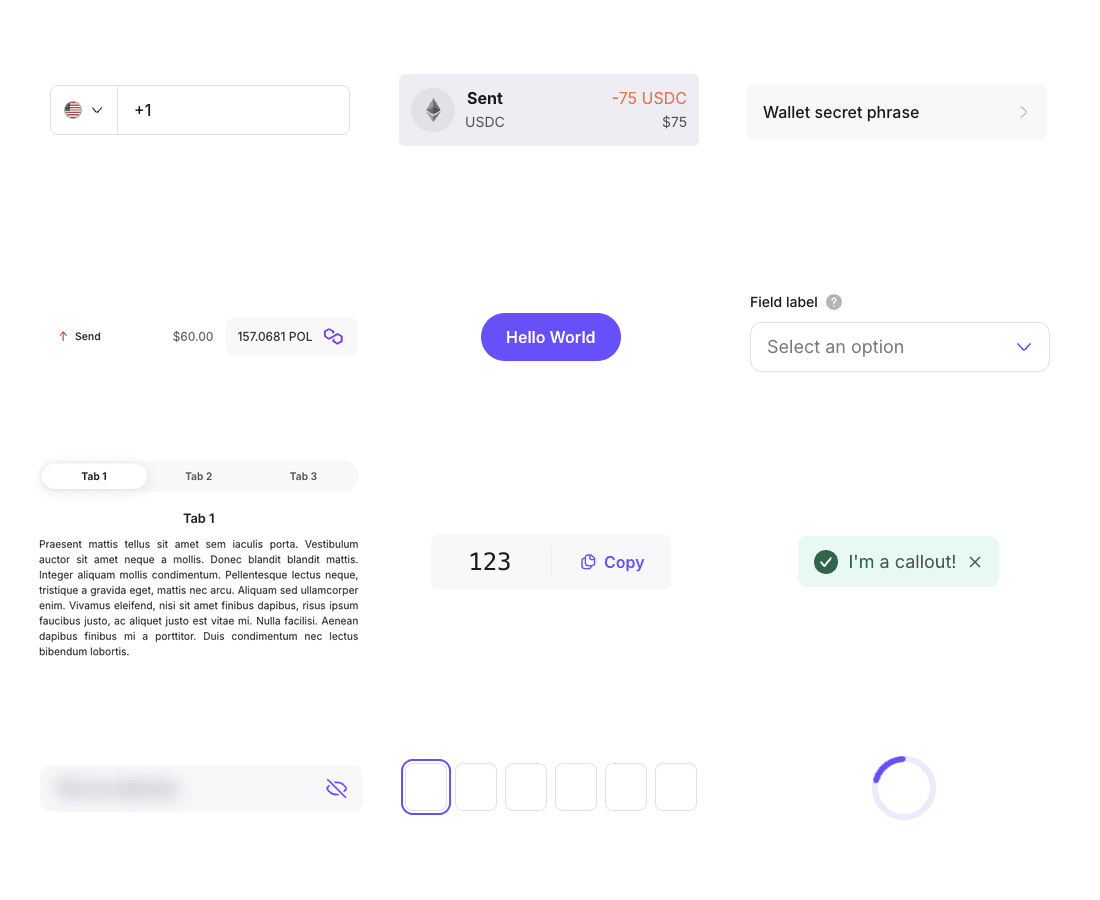Internal UI Library
My Role
I became the primary engineer responsible for evolving and maintaining the internal Magic Labs UI library. My work focused on creating predictable, consistent, and accessible building blocks that other engineers could rely on.
Key Contributions
- Standardized APIs across all core components (Button, Select, Dropdown Menu, Tabs, Modals, Inputs)
- Consolidated styling into a consistent token system using Panda CSS
- Implemented focus states, keyboard navigation, and ARIA roles across interactive components
- Refactored components to reduce unnecessary re-renders and improve async interaction stability
- Replaced duplicated components with unified primitives shared across product surfaces
- Documented recommended usage patterns so teams used components consistently
- Improved DX by making components intuitive, predictable, and safer to use
- Drove alignment between product/design and engineering around reusable patterns
Examples of Improvements Made
Selected highlights that made the library more consistent, accessible, and maintainable.
Button API Unification
Consolidated multiple button variants into one predictable API using a single `variant` prop and standardized `loading` behavior, reducing surface area and cognitive load.
- One component to learn and maintain
- Consistent loading/disabled semantics across surfaces
- Fewer breaking changes when evolving styles
Dropdown & Menu Overhaul
Rebuilt menus with accessible navigation and predictable open/close behavior. Removed duplicates by shipping a shared primitive adopted across product areas.
- Keyboard navigation and focus management
- Deterministic open/close and outside-click handling
- Single primitive reused across agent site, staking, funding, onboarding
Tabs & Step Navigation
Refactored tabs to handle async state and route changes without layout shift. Codified a pattern for multi‑step flows.
- Consistent animation and focus behavior
- Explicit disabled and loading states
- Drop-in pattern used across staking and agent onboarding
Outcome
- Strongly reduced UI drift and duplicated component logic
- Improved accessibility across the entire suite
- Engineers could move faster with fewer bugs caused by inconsistent UI primitives
- Product surfaces felt more cohesive, even though different teams maintained them
- The UI layer became significantly easier to extend and maintain
- New features were built using consistent patterns rather than reinvented components

